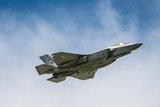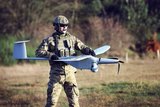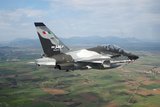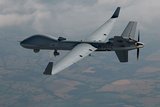Raytheon demonstrates secure conferencing technology for top-level US leaders
Raytheon Intelligence & Space (RI&S) has successfully demonstrated end-to-end system performance for new updates to the C2 capabilities of the PNVC system for the USAF.
PNVC is described as a secure, survivable voice conferencing capability for the President and other senior leaders to assess threats to national security.
The upgrades include improved voice quality, reduced latency, increased number of users, improved situational awareness and a new conference management capability.
'The enhancements for the PNVC system will help ensure our top leaders have secure connectivity to all key stakeholders in times of national crises to stay ahead of the threat in contested environments,' said Denis Donohue, president, surveillance and network systems at RI&S.
'We’ve employed digital engineering, more specifically, model-based systems engineering, as well as agile software development, to deliver systems faster and smarter.'
The demonstration verified component performance and functionality across PNVC nodes using ground fixed, ground mobile and airborne configurations, including Advanced Extremely High Frequency (AEHF) radiation-hardened SATCOM terminals.
PNVC supports Nuclear Command, Control and Communications, a core element of the Joint All Domain Command and Control (JADC2) multi-domain network project.
More from Air Warfare
-
![2025 air market review: European defence independence, next-gen tech and export concerns dominate]()
2025 air market review: European defence independence, next-gen tech and export concerns dominate
This year’s (geo)political turmoil has challenged many long-prevailing assumptions, leading to far-reaching consequences for air forces and their supplier bases in industry worldwide – with five key trends in review for 2025.
-
![Poland air report: Drones, transport aircraft and tankers dominate potential procurement plans]()
Poland air report: Drones, transport aircraft and tankers dominate potential procurement plans
With a rising defence budget and equipment list, Poland’s air market is set to grow as the country continues to modernise its transport and helicopter fleets while seeking out uncrewed aerial vehicles and loitering munitions.
-
![Portugal signals interest in establishing A-29N final assembly line]()
Portugal signals interest in establishing A-29N final assembly line
As the launch customer for the NATO-configured variant, Portugal also took delivery of the first five A-29N aircraft from its order for 12, placed in 2024.
-
![Podcast: Critical Care episode 5 - Sustaining Europe’s frontline from Heidelberg]()
Podcast: Critical Care episode 5 - Sustaining Europe’s frontline from Heidelberg
As Europe ramps up defence investment in the wake of the Ukraine crisis, the spotlight is turning to how nations sustain their growing fleets.
-
![Leonardo signs contract on Austria’s M-346 aircraft order]()
Leonardo signs contract on Austria’s M-346 aircraft order
The first of the 12 M-346 aircraft are expected to be delivered to the Austrian Air Force by 2028, according to the company.
-
![2025 UAV market review: $7.8 billion in new contracts signed as US leads spending]()
2025 UAV market review: $7.8 billion in new contracts signed as US leads spending
Qatar and Indonesia followed the US’s high spending on new uncrewed aerial vehicle contracts across 2025, while MALE and micro drones and loitering munitions were particularly popular subcategories this year.
























